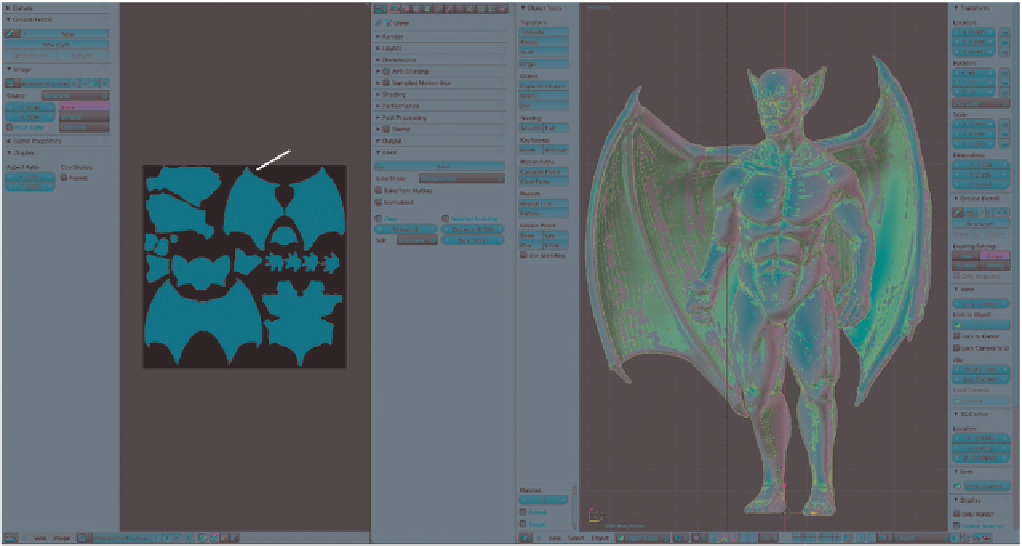Graphics Programs Reference
In-Depth Information
Next I needed to add a Subdivision Surface
modifier to match the level of subdivision between
the top level of the multires mesh and the new,
soon-to-be displaced mesh. I added the modifier
and set the number of subdivisions to 2.
Then, in Edit mode, I selected the whole mesh,
and in the UV Image editor, I added a new image
for the displacement map to be baked to. This image
needed to be a 32-bit float image in order to capture
all of the details of the displacement without creat-
ing artifacts. I set its size to 4096×4096 pixels, more
than enough to capture all the details of the sculpt.
I selected the original multires mesh and my new
final mesh. As shown in Figure 10-4, I made sure
that Selected to Active was enabled and Normalize
was unchecked, and I set the Margin setting to 4 to
give a 4-pixel border around the UV islands, reduc-
ing the chance of artifacts around UV seams. (The
other settings were left at their defaults.)
At this point I was ready to bake my texture, so
I clicked Bake in the Bake panel and set Blender
to work baking my texture. This baked the dis-
placement between my high-poly sculpt and my
subdivided final mesh into a displacement map
holding all of the detail of the high-poly sculpt.
Once finished, I saved this as a 32-bit OpenEXR
image to preserve all the information present in
the displacement map by pressing F3 while in the
UV Image editor and setting the format (in the
bottom left of the file browser editor) to EXR (see
Figure 10-5). You can choose Float (Full) to use
32-bit values. Setting the Codec to ZIP will keep
the file size a bit smaller.
Bit Depth and Textures
I've touched on bit depth briefly, but now I'll explain
it a bit further.
Bit depth
refers to the number of bits
(that is, the length of a number in binary) that is
used to store the red, green, blue, and alpha (RGBA)
values for each pixel in an image. The more bits used
to store each number, the more distinct levels there
are, and the greater the range and subtlety of colors
and brightnesses that can be stored in an image.
Most image formats (such as
.jpg
and
.png
) use
8-bit color, which is fine for simply displaying pic-
tures on screen or even for storing simple diffuse
textures. But if you plan on performing more com-
plex manipulations on your images, such as using
them for displacement maps or altering their colors
and exposure, you'll start to see artifacts appear.
For such demanding use cases, you can use
higher bit depths (either 16 or 32 bit) for images,
which give you a greater range of values to work
with. Using higher bit depths will prevent ugly arti-
facts from appearing in your renders and displaced
32-bit
Baked texture
Figure 10-4: Settings for baking the displacement map for the Bat Creature



Search WWH ::

Custom Search